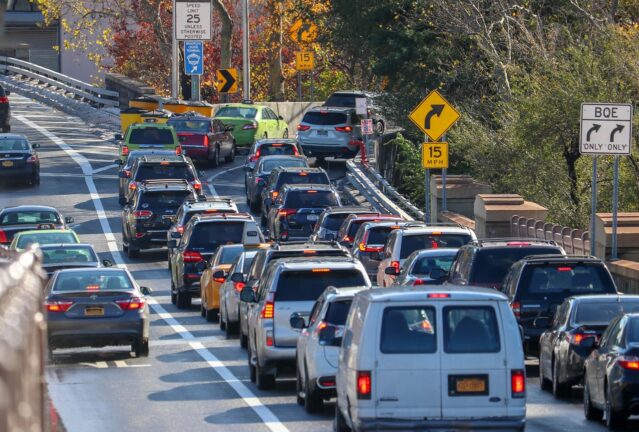German Chancellor Friedrich Merz has been intensifying his push to soften the EU’s 2035 combustion engine ban, shifting from cautious scepticism to active lobbying for alternative solutions like extended-range electric vehicles (EREV). But how much room is there to manoeuvre? And are extended-range vehicles a silver bullet or a half-measure?
The EU’s aim to eliminate new combustion cars by 2035 is a firmly-established goal, welcomed by many as a necessary means of having any chance of cutting carbon emissions and achieving carbon neutrality by 2050. As of late, however, real market concerns have taken some of the shine off its promise and raised the question of whether, particularly in the industrial sector, support will begin to erode.
In late August, Ola Källenius—the head of the European Automobile Manufacturers’ Association (ACEA) as well as CEO of Mercedes—and Matthias Zink, CEO of powertrain and chassis at Schaeffler, sent Commission President Ursula von der Leyen a joint letter stating, among other things, that the full elimination of combustion cars was “no longer feasible”.
More variability, please
At the same time, they reiterated their commitment to the 2050 net-zero goal but called for flexibility and broader technological solutions. They urged the Commission to consider a recalibration of the regulatory path—one that balances climate objectives with industrial competitiveness, social cohesion, supply chain resilience, and technological openness. Even more importantly, they advocated for a regulatory framework that leaves room for a variety of powertrain technologies—not just battery-electric vehicles, but also plug-in hybrids, range extenders, highly efficient internal combustion engines, hydrogen, and decarbonised fuels.
It is no surprise, then, that Chancellor Merz, shaped by the critical role the auto industry plays in Germany’s economy, has picked up the flag. The sheer economic weight of the industry, a major employer and exporter, underpins potential support for extended-range vehicles—not only as a technological compromise but as a way to protect jobs and maintain competitiveness. In this light, the chancellor makes the message clear: ambitious climate goals may be paramount but must also consider economic realities.
You might be interested
Start me up
Anyone less familiar with EREVs will naturally wonder how much can they help? Extended-range vehicles are a type of plug-in hybrid that primarily run on electric power but use a small combustion engine as a backup generator to extend driving range. They offer a middle ground between fully electric vehicles and traditional petrol or diesel cars, easing concerns about charging infrastructure and range limitations. Importantly, for automakers, EREVs allow easier adaptation of existing production lines and technology, avoiding the full overhaul needed for pure battery electric vehicles (BEVs).
When the battery is depleted, extended-range EVs pollute as much as petrol SUVs. — Lucien Mathieu of watchdog T&E, in press release
While EREVs can reduce emissions compared to conventional engines, critics argue they are only a partial solution, for two reasons. One, real-world emissions remain higher than lab estimates and two, they continue to rely on fossil fuels, potentially delaying full electrification. Environmental transport advocate T&E issued a press release this week warning that EREVs have their own limitations.
The better of several options or a Trojan horse?
In response to the debate, T&E wrote:
“Unlike plug-in hybrid vehicles, which switch between a battery and an engine to power the wheels, EREVs only use a battery to power the wheels while an engine or a plug charges the battery. When the battery is depleted, an EREV consumes 6.7 litres of petrol per 100km, on average, in engine mode, according to the latest data from China which leads on the technology.”
That, the watchdog argues, makes them comparable to conventional hybrids whenever they are running the engine.

Lucien Mathieu, cars director at T&E, said: “Merz is pushing a technology that European carmakers have little expertise in and that China would immediately dominate. When the battery is depleted, extended-range EVs pollute as much as petrol SUVs. Their large fuel tanks provide little incentive for drivers to charge. Technology neutrality must not be used as a Trojan horse for continuing to sell polluting powertrains.”
The group emphasised that extended-range vehicles had an “average electric range of 184km, after which they run on the engine.” And because EREVs have large fuel tanks which allow for 900km of travel, the outcome is clear. As a whole, T&E concludes that Plug-in Hybrid Electric Vehicles (PHEVs) are “a dead-end technology for Europe’s automakers” of which EREVs are supposedly just a subset.
Vague answers so far
Back when Commission President von der Leyen received the joint letter in August, she gave a response regarded as relatively vague. In March of this year, the Commission had already signalled some flexibility, agreeing to delay interim CO₂ reduction targets set for 2025—a move seen as a nod to mounting industry pressure.
Then, on 12 September, Ms von der Leyen hosted a high-level meeting with automotive leaders as part of the EU’s Strategic Dialogue. While the gathering aimed to chart a path forward, it did not produce major policy shifts. The Commission reaffirmed its commitment to electrification and the 2035 phase-out but has presumably left open the possibility for future dialogue.





